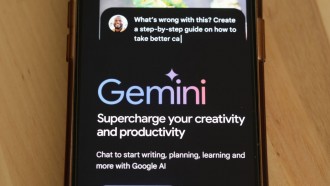Researchers at the University of Washington (UW) have developed a new type of computer that derives its power not from a battery or any other external source but from radio waves it collects and converts into electricity.
Known as the Wireless Identification and Sensing Platform (WISP), this new device is the result of a combination of computing and sensor technologies that make use of Radio Frequency Identification (RFID) reader to gather the radio waves around it in order to turn them into electric power.
While WISP doesn't have the same processing capabilities as other higher-end computers that are available in the market right now, it does have enough power to operate its onboard sensors and transfer data much like other small wearable devices such as Fitbit.
The researchers believe that the new technology can be used to further developed Internet of Things (IoT). WISP can lead to the creation of lower maintenance devices than those equipped with low-energy Bluetooth sensor chips.
This battery-less computer can be used to develop sensors capable of monitoring the structural stability of buildings in case a natural disaster occurs. Agriculture researchers can also use WISP to monitor the growth of crops in fields.
Another application for the Wireless Identification and Sensing Platform is in the form of a backup calling module for phones so that people can still use them in the event of a power outage or if their phone's battery has run out.
The UW team worked closely with colleagues at the Delft University of Technology in The Netherlands to provide WISP with wireless programming capabilities. The resulting Wisent protocol now allows the battery-less computer to be reprogrammed using the same radio waves it collects.
"Our vision is to have truly wirelessly reprogrammable software-defined battery-less computers wherever and whenever we want," TU Delft Assistant Professor Przemysław Pawełczak said.
So far, the researchers haven't released any details on when the new WISP computer will be offered to the public and how much a unit will likely cost.









